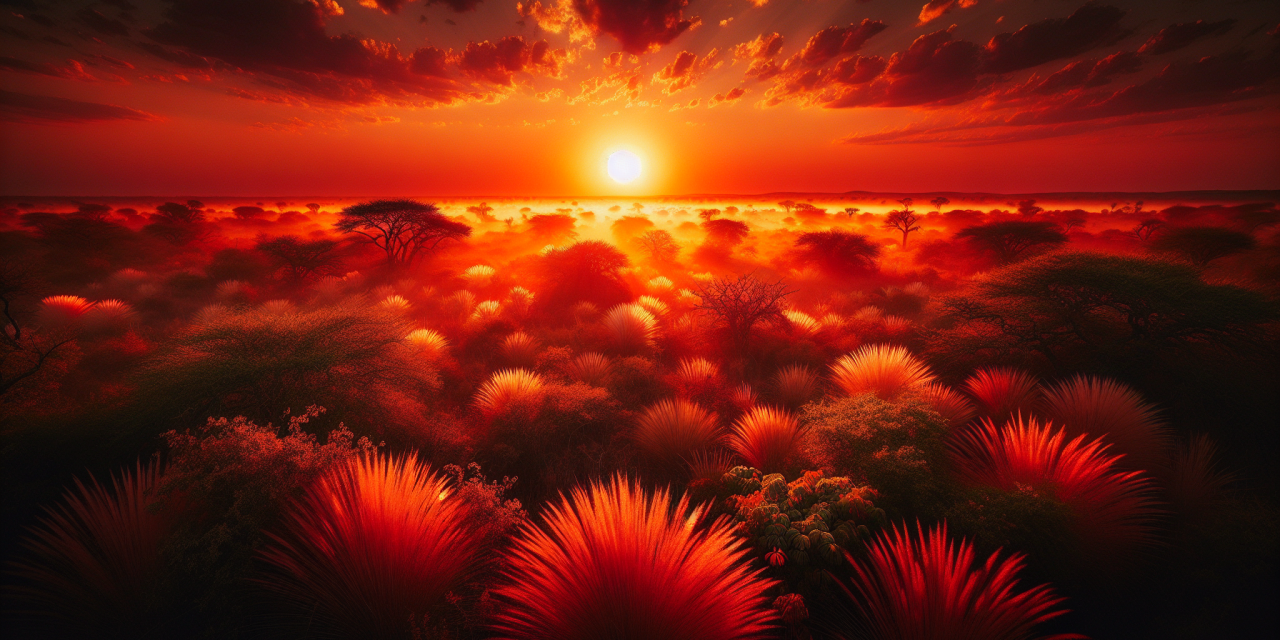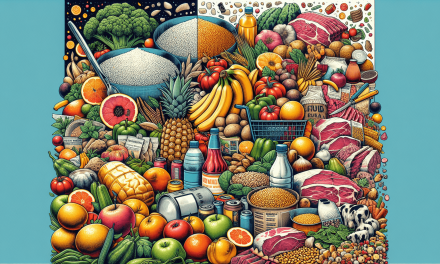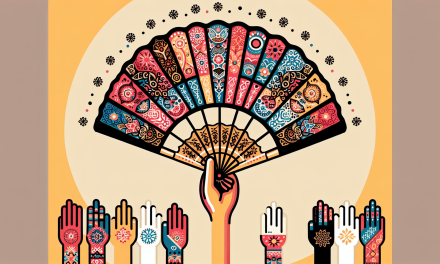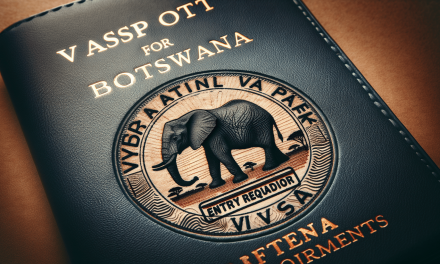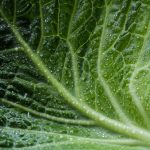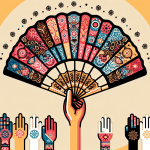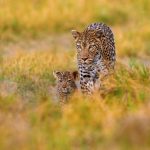If you’ve ever been curious about the weather conditions in Botswana, look no further. This article provides a comprehensive overview of what the weather is like in Botswana throughout the year. From scorching hot days to pleasantly cool nights, Botswana’s climate is known for its extremes. So, whether you’re planning a safari adventure or simply want to learn more about this fascinating country, read on to discover what each season has in store for you in terms of weather in Botswana.
January
Temperature
In January, the weather in Botswana is characterized by high temperatures, making it one of the hottest months of the year. During the daytime, temperatures can often reach up to 40 degrees Celsius (104 degrees Fahrenheit) or even higher in some areas. However, it’s important to note that temperatures can drop significantly during the night, leading to cooler evenings.
Precipitation
January is part of the rainy season in Botswana, and it experiences some rainfall. However, the rainfall is generally sporadic and doesn’t last for extended periods. On average, Botswana receives around 60 to 80 millimeters of precipitation during January. These rainfall events help to support the lush vegetation and replenish watering holes, attracting a diverse range of wildlife to the country’s national parks.
Sunshine Hours
In January, Botswana experiences plenty of sunshine, making it an ideal time to explore the country’s outdoor attractions. On average, there are approximately 8 to 10 hours of sunshine per day. This abundance of sunlight provides ample opportunities for activities such as wildlife viewing, game drives, and birdwatching. It is advisable to wear sunscreen and stay hydrated due to the intense sunlight and high temperatures.
February
Temperature
As February rolls around, Botswana continues to experience hot temperatures. The days are generally scorching, with temperatures similar to those in January, often exceeding 40 degrees Celsius (104 degrees Fahrenheit). However, as the month progresses, there might be a slight decrease in temperatures, offering a bit of relief from the extreme heat.
Precipitation
February typically marks the tail end of the rainy season in Botswana, and the amount of rainfall starts to decrease. While there might still be occasional showers, they are generally less frequent and intense than in previous months. On average, Botswana receives around 40 to 60 millimeters of rainfall during February, contributing to the overall lushness of the landscape.
Sunshine Hours
Despite the gradual decrease in rainfall, February continues to provide ample sunshine. Expect around 8 to 10 hours of sunlight per day, which allows for enjoyable outdoor activities. With the combination of warm temperatures and hours of sunshine, this month is an excellent time to explore Botswana’s picturesque landscapes and observe its diverse wildlife.
March
Temperature
March heralds the beginning of autumn in Botswana and brings a slight cooling trend compared to the previous months. Typically, the daytime temperatures range from 30 to 35 degrees Celsius (86 to 95 degrees Fahrenheit), allowing for more comfortable outdoor adventures. However, it is still advisable to protect yourself from the sun and stay hydrated.
Precipitation
During March, Botswana experiences a decrease in rainfall compared to the preceding months. While there may still be occasional showers, they tend to be scattered and shorter in duration. On average, Botswana receives around 20 to 40 millimeters of precipitation during March, contributing to the continued lushness of the landscape.
Sunshine Hours
March offers a good balance of sunshine and pleasant temperatures. With approximately 8 to 9 hours of sunlight per day, there is plenty of time to enjoy outdoor activities such as safaris, nature walks, and boat cruises. The milder temperatures make it a popular time to visit Botswana’s national parks and wildlife reserves, offering incredible opportunities for wildlife sightings.
April
Temperature
In April, Botswana experiences a transition into cooler weather as it heads towards winter. The daytime temperatures range from 25 to 30 degrees Celsius (77 to 86 degrees Fahrenheit), providing comfortable conditions for outdoor activities. However, it is advisable to bring layers as the evenings and early mornings can be significantly cooler.
Precipitation
April marks the end of the rainy season in Botswana, and rainfall becomes increasingly rare. While some areas may still experience the occasional shower, these are generally short-lived and isolated. On average, Botswana receives around 5 to 15 millimeters of precipitation during April, signaling the start of a drier period.
Sunshine Hours
April continues to provide generous sunshine hours, with approximately 8 to 9 hours of sunlight per day. This sunny weather, combined with the milder temperatures, makes it an ideal time for various outdoor activities. Whether you’re exploring the unique ecosystems of the Okavango Delta or embarking on a thrilling wildlife safari, April offers pleasant conditions for your Botswana adventure.
May
Temperature
May brings cooler temperatures as the winter season progresses in Botswana. During the day, temperatures range from 20 to 25 degrees Celsius (68 to 77 degrees Fahrenheit), with slightly colder evenings and early mornings. It is recommended to pack layers and warmer clothing to stay comfortable throughout the day.
Precipitation
May marks the start of the dry season in Botswana, and rainfall becomes highly unlikely. The days are generally clear and sunny, with minimal chances of rain. Botswana receives very little precipitation during May, with average rainfall amounts below 5 millimeters, contributing to the arid conditions that characterize certain regions of the country.
Sunshine Hours
Despite the cooler temperatures, May continues to offer a good amount of sunshine, with approximately 8 hours of sunlight per day. The clear skies and reduced chance of rain make it an excellent time to explore Botswana’s natural wonders. Whether you’re enjoying a mokoro ride through the winding channels of the Okavango Delta or embarking on a photographic safari, you can expect great visibility and breathtaking landscapes.
June
Temperature
June marks the heart of winter in Botswana, and temperatures continue to drop further. During the daytime, temperatures range from 15 to 22 degrees Celsius (59 to 72 degrees Fahrenheit), with colder evenings and early mornings. It is essential to pack warm clothing, including jackets, hats, and scarves, to stay comfortable in the cooler conditions.
Precipitation
June is part of the dry season in Botswana, and rainfall is extremely rare. The chances of experiencing any precipitation diminish significantly during this month. Botswana receives minimal rainfall during June, with average rainfall amounts below 5 millimeters. It is important to note that certain areas, such as the Okavango Delta, may still have water from previous rainy season inflows.
Sunshine Hours
Despite the cooler temperatures, June continues to offer a good amount of sunshine, with approximately 8 hours of sunlight per day. The clear skies allow for excellent visibility, making it an ideal time for wildlife viewing and safari adventures. Whether you’re exploring the Chobe National Park or enjoying the stunning vistas of the Makgadikgadi Pans, the winter sunshine adds a beautiful touch to your Botswana experience.
July
Temperature
July is the coldest month in Botswana, as it falls deep into winter. During the day, temperatures range from 13 to 20 degrees Celsius (55 to 68 degrees Fahrenheit), with even colder evenings and early mornings. It is crucial to pack warm clothing, including thermals, gloves, and beanies, to stay comfortable throughout your outdoor activities.
Precipitation
July is part of the dry season, and rainfall is highly unlikely in Botswana. The days are generally dry, with a very low chance of experiencing any precipitation. Average rainfall amounts remain below 5 millimeters during this month. While water sources may still be available in certain areas due to previous inflows, the overall landscape becomes drier.
Sunshine Hours
Despite the cold temperatures, July continues to provide a good amount of sunshine, with approximately 8 hours of daylight. The clear skies and limited chances of rain create optimal conditions for exploring Botswana’s vast landscapes. Whether you’re traversing the Kalahari Desert or witnessing the incredible wildlife of the Moremi Game Reserve, the winter sunshine illuminates your adventures and adds a touch of warmth to your experiences.
August
Temperature
In August, Botswana’s winter continues, bringing cold temperatures throughout the country. During the day, temperatures range from 15 to 22 degrees Celsius (59 to 72 degrees Fahrenheit), with colder evenings and early mornings. It is crucial to pack warm clothing, including layers, jackets, and hats, to ensure your comfort during outdoor activities.
Precipitation
August is part of the dry season in Botswana, and rainfall is highly unlikely. The days are generally dry and clear, with minimal chances of experiencing any precipitation. Average rainfall amounts remain below 5 millimeters. While some areas may still have water sources from previous rainy season inflows, overall, the landscape becomes drier.
Sunshine Hours
August continues to offer a satisfactory amount of sunshine, with approximately 8 hours of daylight. The clear skies and lack of rain create favorable conditions for exploring Botswana’s natural wonders. Whether you’re exploring the majestic landscapes of the Central Kalahari Game Reserve or embarking on a walking safari in the Khwai Concession, the winter sunshine adds a special glow to your adventures.
September
Temperature
September marks the transition from winter to spring in Botswana, bringing milder temperatures as the days begin to warm up. During the day, temperatures range from 20 to 28 degrees Celsius (68 to 82 degrees Fahrenheit), with slightly cooler evenings. It is a good idea to pack a mix of warm and lighter clothing to adapt to the changing temperatures throughout the day.
Precipitation
September is part of the dry season in Botswana, and rainfall becomes highly unlikely. The days are generally dry and sunny, with minimal chances of experiencing any precipitation. Average rainfall amounts remain well below 5 millimeters. While water sources may still be available in certain areas, such as the Okavango Delta, the overall landscape becomes drier.
Sunshine Hours
September provides ample sunshine, with approximately 9 hours of daylight per day. The clear skies and limited chances of rain create optimal conditions for outdoor activities. Whether you’re exploring the Moremi Game Reserve or venturing into the Nxai Pan National Park, the spring sunshine enhances the beauty of Botswana’s natural landscapes, making it a perfect time to capture stunning photographs.
December
Temperature
December ushers in the summer season in Botswana, bringing with it rising temperatures as the year draws to a close. During the day, temperatures range from 35 to 40 degrees Celsius (95 to 104 degrees Fahrenheit), making it one of the hottest months of the year. It is essential to protect yourself from the sun and stay hydrated in these extreme temperatures.
Precipitation
December is part of the rainy season in Botswana, and the country experiences increased rainfall. While the rainfall can be sporadic, it can sometimes be heavy and prolonged, leading to temporary flooding in certain areas. On average, Botswana receives around 60 to 80 millimeters of precipitation during December, contributing to the rejuvenation of the land after the dry season.
Sunshine Hours
Despite the increased rainfall, December still offers a good amount of sunshine, with approximately 8 to 10 hours of daylight per day. This provides ample opportunities for outdoor activities, although it is important to plan for sudden weather changes. Whether you’re exploring the enchanting Okavango Delta or witnessing the impressive migration of wildebeest in the Makgadikgadi Pans, the summer sunshine adds vibrancy to your Botswana adventures.

